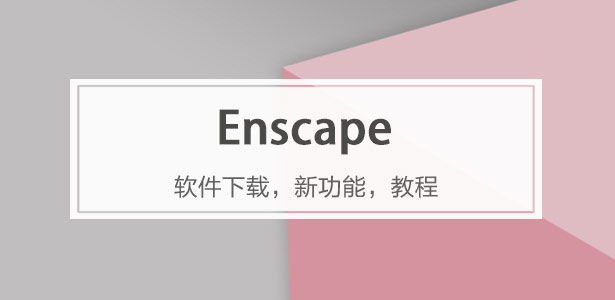
下載app免費領(lǐng)取會員



設(shè)計單位? 意度建筑
項目地點? 北京
建成時間? 2023年1月
建筑面積? 751平方米
本文文字由設(shè)計單位提供。
京杭運河
The Beijing-Hangzhou Grand Canal
京杭大運河是世界上里程最長、工程最大的古代運河,也是最古老的運河之一,全長約1797公里,至今已有2500多年的歷史。北京通州段之運河,因它主要擔(dān)負著運送南方糧食及征收稅賦之重任,被當(dāng)?shù)孛耖g學(xué)者贊為 “銅幫鐵底” 運糧河。曾經(jīng)的通州運河兩岸,那是一片何等的繁忙盛景。
The Grand Canal is the longest and largest ancient canal in the world and also one of the oldest. With a length of approximately 1,797 kilometers, it has a history of more than 2,500 years. The section of the canal in Tongzhou District, Beijing is known as the "copper-sided and iron-bottomed" grain transport river by local folk scholars. As it was mainly used for transporting grain from the south and collecting taxes, the banks of the Tongzhou Canal were once extremely busy.
運河書院坐落在北京大運河通州段的西岸,位于北京城市副中心的東側(cè),它原是一座古色古香的仿古建筑,周邊桃林絢爛,綠柳搖曳,人們唯有穿過林間那蜿蜒的步行小徑,方可抵達這方寧靜之地。
The Canal Academy is situated on the west bank of the Tongzhou section of the Grand Canal in Beijing and on the east side of the sub-center of Beijing. Originally an antique-style building, it is surrounded by peach blossoms and green willows. People can only reach it by traversing the footpaths in the forest.

這座建筑已經(jīng)閑置十余年,業(yè)主希望將其改造為一個包含旅游接待、休憩、水吧和書屋等功能的復(fù)合空間,使其既滿足公園游客接待的公益職能,又可通過經(jīng)營水吧和書屋實現(xiàn)投資運營收支平衡。
This building has been unused for over a decade. The owner hopes to convert it into a complex functional space incorporating tourism reception, rest areas, a water bar, and a bookshop. This will not only fulfill the public welfare function of receiving tourists in the park but also achieve a balance between investment, operation, income, and expenditure by operating the water bar and bookshop.
流淌的界面·流動的空間
Flowing Interface · Flowing Space
既有建筑的柱網(wǎng)布置極為緊密,南北共列五排柱網(wǎng),四跨縱深,類似古建筑的“雙槽”柱網(wǎng)體系。建筑的中部柱子高聳,在距地面三點九米的標(biāo)高處,存有橫向聯(lián)系梁。這想必與仿古建筑的屋面舉折相關(guān),然而這卻致使空間被切割得支離破碎。我們一致認為,此空間并不適宜作為接待中心與書屋。倘若依據(jù)柱位砌墻以限定空間,那柱子便會過多,空間不但會顯得呆板瑣碎,中部柱跨的光線也將因受邊跨墻體的阻擋而變得幽暗。
The column grid layout of the existing building is quite dense, with a total of five rows of column grids from north to south and four bays in depth. Moreover, because the columns in the middle are excessively tall, there is a transverse connecting beam at an elevation of 3.9 meters from the ground. This is presumably related to the roof pitch of the antique-style building. However, this leads to the space being extremely fragmented. In our view, this space is not suitable for being a reception center and a bookshop. If walls are constructed according to the column positions to demarcate the space, there will be too many columns. The space will not only be rather rigid and fragmented, but also the light in the middle column bay will become dim as it is blocked by the walls of the side bays.


因此我們希望打破既有柱網(wǎng)的限定,創(chuàng)造去一個“無柱”空間,讓自然光線和空氣自由流動,為訪客構(gòu)建一處自由徜徉的休憩場所。基于這個認知,我們提出了一個“流淌的墻體”的概念,以曲線形的片墻串聯(lián)起柱網(wǎng),通過柱子間的靈動連線消解柱子,構(gòu)建出不規(guī)則卻又相對完整的空間形態(tài),并在彎曲的墻上開挖拱形洞口,聯(lián)絡(luò)被分隔的空間,形成相對模糊的邊界區(qū)隔。如此一來,流動的墻體將空間融合為一個整體,各個空間之間也變得 “透明” 起來,構(gòu)成相互關(guān)聯(lián)、相互凝望的觀照體系。這種辦法類似于將自由的園林空間結(jié)構(gòu)植入了類似中國建筑“雙槽”的嚴(yán)整平面,為建筑內(nèi)部的空間賦予了起承轉(zhuǎn)合和因借自然的趣味性。
Therefore, we aspire to shatter the confines of the existing column grid and fashion a “column-less” space, enabling natural light and air to flow freely and establishing a haven where visitors can wander at will and find repose. Grounded in this perception, we put forward the concept of “flowing walls”. Curved partition walls are employed to link up the column grids. Through the supple connections between the columns, the columns are gradually dissolved, thus giving rise to an irregular yet relatively complete spatial form. Arch-shaped openings are carved on the sinuous walls to bridge the separated spaces and create relatively indistinct boundary divisions. In this manner, the flowing walls not only fuse the space into a unified whole but also render the spaces “transparent” to one another, constituting an interconnected and mutually observing system. This approach is akin to implanting the free garden space structure into a strict plane reminiscent of the “double grooves” of Chinese architecture, endowing the interior space of the building with the allure of transition, connection, and borrowing from nature.





游客休憩區(qū)位于建筑最北側(cè),臨窗而居,為坐下來歇腳的游客提供觀看北面小丘景觀的機會。旅游咨詢和水吧區(qū)融合在一起,面向入口大廳,為游客提供解答、補水和簡餐等服務(wù)。
The tourist rest area is located at the northernmost side of the building. Situated by the window, it provides an opportunity for tourists taking a break to view the landscape of the small hill to the north. The tourist information and water bar area are integrated. Facing the entrance hall, it provides services such as answering questions, replenishing water, and offering simple meals for tourists.


多功能區(qū)既是讀書區(qū)又可兼做休憩區(qū),布置在空間中部。繞過正對入口的“影壁墻”,是相對獨立的讀書區(qū),這里相對私密安靜,在閱讀的同時也可觀看南側(cè)庭院景色。
The multi-functional area serves as both a reading area and a rest area and is located in the middle of the space. After bypassing the "screen wall" directly facing the entrance, there is a relatively independent dedicated reading area. This place is relatively private and quiet, making it suitable for reading. One can also view the courtyard scenery on the south side.

服務(wù)空間集中布置在建筑東南角。三種空間由喧鬧到安靜,逐漸過渡,銜接自然。這受益于在流動墻體上掏挖的拱洞,使各空間不至于突然轉(zhuǎn)換而顯得割裂,既保證了這三種空間既相互聯(lián)通,又相對獨立。
The service space is centrally arranged in the southeast corner of the building. The three spaces gradually transition from noisy to quiet, with a natural connection. This benefits from the arched openings excavated in the flowing walls, so that the spaces do not appear fragmented due to sudden transitions, ensuring that these three spaces are both interconnected and relatively independent.

在建筑的剖面研究中,我們發(fā)現(xiàn),由于建筑采用中式的的“大屋頂“建筑形制,其中部空間極為高聳,如不加以利用,殊為可惜,但由于現(xiàn)狀3.9m標(biāo)高的連系梁又使其難以使用。因此我們利用現(xiàn)有的結(jié)構(gòu),在3.9m標(biāo)高處的橫向聯(lián)系梁之間,增加單元式夾層,改造為多功能閱覽區(qū)。
In the sectional study of the building, we found that due to the adoption of the Chinese-style "large roof" architectural form, the central space of the building is extremely high. If not utilized, it would be a great pity. However, due to the fact that the existing connecting beam at an elevation of 3.9 meters is difficult to use. Therefore, we make use of the existing structure and add unit-type mezzanines between the transverse connecting beams at an elevation of 3.9 meters and transform it into a multi-functional reading area.
但是以現(xiàn)狀3.9m梁標(biāo)高為單元式夾層結(jié)構(gòu)板標(biāo)高的話,由于屋面折梁截面高度較大,多功能閱覽區(qū)的凈高捉襟見肘,因此我們讓夾層結(jié)構(gòu)梁底標(biāo)高與3.9m標(biāo)高混凝土梁的底部平齊,單元式夾層被輕輕的懸掛在原結(jié)構(gòu)上,由此提高了折梁下面的空間凈高,形成一個尺度合宜的“閱池”。同時,因3.9m標(biāo)高的東西向聯(lián)系梁的上部為屋脊的下方空間,我們將其作為聯(lián)系走道,并在其頂部集成空調(diào)和照明,用足高度。訪客可通過走道找到“閱池”,經(jīng)過木質(zhì)臺階步入閱池,坐在半圓形的臺階上,在斜屋頂?shù)摹笆a蔽”中, 沉下心去,靜靜地讀書。
However, if the current beam elevation of 3.9 meters is taken as the elevation of the unit-type mezzanine structure slab, due to the large cross-sectional height of the folded roof beam, the clear height of the multi-functional reading area is rather constrained. Therefore, we align the bottom elevation of the mezzanine structure beam with the bottom of the 3.9-meter elevation concrete beam. The unit-type mezzanine is delicately suspended on the original structure, thus increasing the clear height of the space under the folded beam and creating a “reading pool” of appropriate scale. At the same time, since the upper part of the east-west connecting beam at the elevation of 3.9 meters is the space below the roof ridge, we use it as a connecting walkway and integrate air conditioning and lighting on its top to fully utilize the height. Visitors can find the “reading pool” through the walkway and enter it via wooden steps. Sitting on the semicircular steps, under the “shade” of the sloping roof, they can settle down and read quietly.




舊物的記憶
Memory of Old Objects
京杭大運河對于生活在運河沿岸的人們來說,沉積了難忘的歷史與記憶。但隨著時間的流逝,這種記憶變得模糊,存留下來的記憶最終會凝結(jié)在歷史遺物上,如杭州的拱宸橋、北京的什剎海,成為人們心中共同的集體記憶。
For those who dwell along the Beijing-Hangzhou Grand Canal, it has accrued an unforgettable history and a trove of memories. Yet, as time slips by, these memories grow hazy. The remaining recollections will ultimately coalesce upon historical relics, like Gongchen Bridge in Hangzhou and Shichahai in Beijing, becoming the common collective memory in people's hearts.
而在大運河森林公園,除了流淌的河流,沒有可觀的遺跡實存。但對于業(yè)主來說,運河很多設(shè)施的施工出自他們之手,多年的養(yǎng)護工作有著他們的足跡,這些事件不可否認的也應(yīng)屬于運河記憶的一個分子,那么相關(guān)的舊物也理所應(yīng)當(dāng)屬于“遺物”的范疇。比如說圍合院子、保護草坪的木柵欄,已經(jīng)在此留存十余年,雖然無法與附近的通運橋和燃燈塔相比,我們?nèi)匀徽J為這也是運河記憶的一部分,并且這些舊物更接近普通民眾的記憶,它有屬于自己的歷史價值。由此我們擴展了這種記憶的外延,收集這些木柵欄、青瓦、玻璃磚和運河沿岸的經(jīng)過雕琢老石條,作為建造的材料。收集的工作也不限于北京本地,我們沿著運河一路向南,奔赴山東、江蘇和浙江,尋找有故事的石頭、有記憶的門券……
For those who dwell along the Beijing-Hangzhou Grand Canal, it has accrued an unforgettable history and a trove of memories. Yet, as time slips by, these memories grow hazy. The remaining recollections will ultimately coalesce upon historical relics, like Gongchen Bridge in Hangzhou and Shichahai in Beijing, becoming the common collective memory in people's hearts.In the Grand Canal Forest Park, apart from the flowing river, there are no visible remnants in existence. But for the proprietors, many facilities along the canal were constructed by their hands, and their footprints are left in the years of maintenance work. Undoubtedly, these events should also be a part of the canal's memory. Thus, related old objects should rightfully belong to the category of "relics." For instance, the wooden fences that enclose the yard and safeguard the lawn have been here for over a decade. Although they cannot be compared with the nearby Tongyun Bridge and Rantern Pagoda, we still believe that this is also a part of the canal's memory. Moreover, these old objects are closer to the memories of ordinary people and possess their own historical value. Hence, we have expanded the reach of this memory. We collect these wooden fences, gray tiles, glass bricks, and the old carved stone slabs along the canal as construction materials, and it is not limited to Beijing. Finally, we journey south along the canal to Shandong, Jiangsu, and Zhejiang in search of stones with tales and entrance tickets with memories...

在尋訪中,我們發(fā)現(xiàn),很多造園師、商人利用自己收集的舊物件打造自己的宅邸,細節(jié)交接很有趣味,毫不拘泥。這些見聞直接影響了我們對地面鋪裝的做法,最終我們采用項目老建筑屋頂?shù)呐f瓦做鋪裝,并搭配老石板、舊青磚組合成耐人尋味,引人深思的構(gòu)造細節(jié)。
During our search, we discovered that many gardeners and merchants use the old items they have collected to create their own mansions. The detailed connections are very interesting and unrestrained. These observations directly influenced our approach to ground paving. In the end, we used the old tiles replaced from the roof of the old building in the project for paving, and combined with old stone slabs and old blue bricks to form thought-provoking and contemplative structural details.
在我們看來,這種舊物實際上是一種可以直接引發(fā)意識共鳴的淺層意義上的符號,也是最容易引發(fā)聯(lián)想和通感的手段。舊物材料的符號特性,傳達著耐人尋味的記憶和時間痕跡,讓人聯(lián)想到千年運河遺留下的點滴故事。
In my view, these old objects are, in essence, symbols of a shallow sort, capable of directly striking a chord in consciousness. They are also the most effortless means to evoke associations and synesthesia. The symbolic nature of old materials conveys memories that are as captivating as a mystery and traces of time. They are like silent storytellers, making people think of the dribs and drabs of tales left by the millennium-old Grand Canal.

我們將原來保護草坪的木柵欄改造為木質(zhì)天花,空調(diào)出風(fēng)口也采用舊木板,讓木工師傅切割成細條,制作成出風(fēng)和回風(fēng)百葉;我們還將甲方拆遷時收集的木板作為樓梯的地板。時間的打磨令木板紋理更加深刻,風(fēng)雨的洗禮讓它們的質(zhì)感更加豐富,再加上工人敲打的眀釘,使這種舊木板更具故事性。
We transformed the original wooden fence that protected the lawn into a wooden ceiling. The air vents of the air conditioner also employ old wooden boards. The carpenter cuts them into thin strips and fashions them into air outlet and return louvers, as if crafting delicate works of art. We also use the wooden boards collected by the client during demolition as the floor of the stairs. Time's gentle polishing has etched deeper textures into these boards, like an artist's brushstrokes on a canvas. The baptism of wind and rain has enriched their texture, endowing them with a patina of age. Coupled with the exposed nails hammered by workers, these old wooden boards are like pages from a history book, brimming with tales waiting to be told.

業(yè)主拆除的舊玻璃磚被用到外立面中,與窗子配合形成采光、通風(fēng)和觀景的功能組合。玻璃磚令光纖柔和的進入室內(nèi),增加了內(nèi)外景觀的朦朧感。
The old glass bricks removed by the owner are used in the facade and combined with the windows to form a functional combination of lighting, ventilation, and viewing. The glass bricks allow the soft light to enter the room, increasing the hazy feeling of the interior and exterior landscapes.

由于這些舊物尺寸、規(guī)格和數(shù)量都不準(zhǔn)確,在砌筑的過程中,項目團隊必須親自駐場設(shè)計,根據(jù)具體材料的材質(zhì)和尺寸和工人師傅一起探討,尋找最合適的砌筑方案,保證灰縫最小,并確保拼貼的節(jié)奏美感。
Since the sizes, specifications, and quantities of these old objects are all inaccurate, during the masonry process, one must be present on site for design in person. Discuss with the workers according to the material and size of the specific materials to find the most suitable masonry scheme, ensure the smallest mortar joint, and ensure the rhythmic beauty of the collage.


在軟裝階段,業(yè)主將他們拆掉的一些就燈具、空調(diào)、咖啡機、桌椅等一股腦運過來,準(zhǔn)備都放在書院里邊。在我們業(yè)內(nèi)的認知力,這些軟裝必須與原設(shè)計的審美與性格相符合,否則設(shè)計就失掉了控制,變得不純粹。因此,起初我們是難以接受業(yè)主的這些做法的。
During the soft decoration stage, the owner simply brought over all the old lamps, air conditioners, coffee machines, tables, chairs, and other items they had removed and planned to place them all inside the academy. In our professional perception, these soft decorations must conform to the aesthetics and character of the original design. Otherwise, the design will lose control and become impure. Initially, we had difficulty accepting these actions of the owner.
但在調(diào)整軟裝過程中,我們不斷反問自己:是誰規(guī)定必須要做成與設(shè)計初衷一模一樣才是對的?是誰規(guī)定設(shè)計必須百分百落地才是好的?我們認為,好的設(shè)計應(yīng)該允許條件的不斷變化,好的空間應(yīng)是可以無限使用的,也需要允許業(yè)主的自我調(diào)整與完善。在與自己達成和解之后,我們與業(yè)主一同,根據(jù)空間的氣質(zhì),在比選中確定“最合適”的那組舊家具。
However, during the process of adjusting the soft decoration, I constantly asked myself: Who stipulates that it must be exactly the same as the original design intention to be correct? Who stipulates that a design must be fully implemented to be good? I believe that a good design should allow for continuous changes in conditions. A good space should be infinitely usable and also need to allow the owner's self-adjustment and improvement. After reaching reconciliation with myself, we worked with the owner to determine the "most suitable" set of old furniture through comparison and selection according to the temperament of the space.

顯然,這種“開盲盒”式的組合一定不會達到設(shè)計師內(nèi)心的“完美狀態(tài)”:上世紀(jì)90年代的玻璃燈具配合著裸露的混凝土屋頂,不加粉飾的墻面映襯著工業(yè)風(fēng)的色溫不一致的吊燈…….但慶幸的是,空間中的90%材料都是舊物,我們認為它們均被時間罩上了一層“蒙版”,讓自身變得溫潤而不至于顯得那么尖利。它們本身就攜帶著情緒,攜帶著一種“不完美”,而這種不完美的集合,使得空間組成的“視覺顆粒”更為均質(zhì)化,從而產(chǎn)生一種整體帶有懷舊情緒的朦朧美感。
Obviously, this "blind box opening" style combination will definitely not reach the "perfect state" in the designer's heart: glass lamps from the 1990s are matched with the exposed concrete roof, and the unadorned walls are set off by industrial-style pendant lamps with inconsistent color temperatures... But fortunately, 90% of the materials in the space are old objects. We believe that they are all covered by a "mask" of time, making themselves gentle and not so sharp. They themselves carry emotions and a kind of "imperfection." And this collection of imperfections makes the "visual particles" that make up the space more homogeneous, thus creating an overall hazy aesthetic with nostalgic emotions.

運河書院雖然面積不大,但其從設(shè)計到施工歷經(jīng)四年,帶給我們很多思考。我們認為它是個典型的平民建筑,不追求華美的外表,不艷羨精致的材料,不糾結(jié)精致的細節(jié),讓自由的空氣流動于空間之中,讓凝結(jié)時間記憶的材料表達自身的魅力。對于我們而言,在某種條件及業(yè)主認知的限定下,引導(dǎo)業(yè)主是一種條件反射,但當(dāng)理性分析后,業(yè)主的訴求是“正義”的,我們除了愿意放棄專業(yè)霸權(quán)外,還需要將那些看似不可理喻的訴求,通過自己的認知和專業(yè),轉(zhuǎn)化為一種正向的、具有意義的過程和結(jié)果。
Although the Canal Academy is not large in area, it has taken four years from design to construction. It has given me a lot of thoughts. I think it is a typical civilian building. It does not pursue gorgeous appearances, envy exquisite materials, or get bogged down in delicate details. It allows free air to flow through the space and lets materials that condense time memories show their own charm. For us, under certain conditions and within the limitations of the owner's perception, guiding the owner is a kind of instinctive reaction. But after rational analysis, if the owner's demands are “justifiable,” in addition to being willing to give up professional hegemony, we also need to transform those seemingly unreasonable demands into a positive and meaningful process and result through our own cognition and professionalism.



設(shè)計圖紙? ▽









完整項目信息
項目名稱:北京大運河書屋
項目類型:改造
項目地點:北京
建成狀態(tài):建成
設(shè)計時間:2019年8月—2020年6月
建設(shè)時間:2019年11月—2023年1月
用地面積:890平方米
建筑面積:751平方米
設(shè)計單位:意度建筑
聯(lián)系方式:EDO_ARCH@163.com
主創(chuàng)建筑師:諶喜民
設(shè)計團隊完整名單:張旭、鄧劍斌、張雨、余明倫
施工:北京金福藝農(nóng)農(nóng)業(yè)科技集團有限公司
業(yè)主:北京金福藝農(nóng)農(nóng)業(yè)科技集團有限公司
攝影師:金偉琦
版權(quán)聲明:本文由意度建筑授權(quán)發(fā)布。歡迎轉(zhuǎn)發(fā),禁止以有方編輯版本轉(zhuǎn)載。
投稿郵箱:media@archiposition.com
本文版權(quán)歸腿腿教學(xué)網(wǎng)及原創(chuàng)作者所有,未經(jīng)授權(quán),謝絕轉(zhuǎn)載。

上一篇:行業(yè)新聞 | 成都這個“未來建筑”獲得國際獎項
下一篇:行業(yè)新聞 | 山西印發(fā)《專項規(guī)劃》促進建筑垃圾治理及資源化利用












推薦專題
































